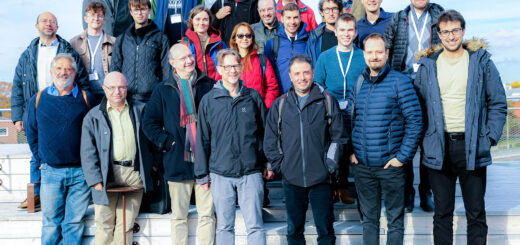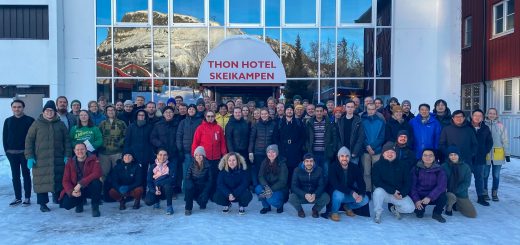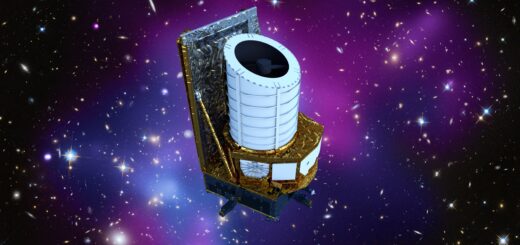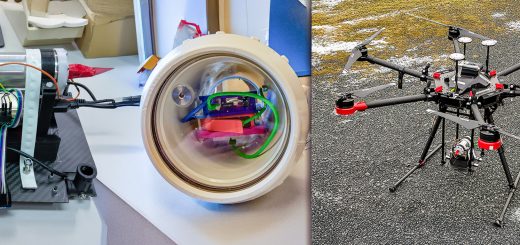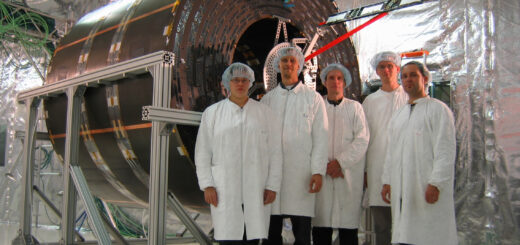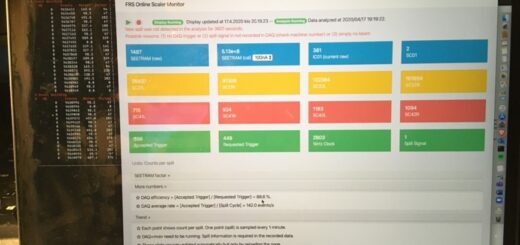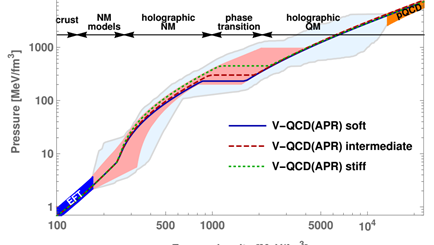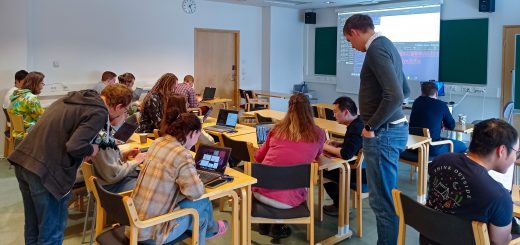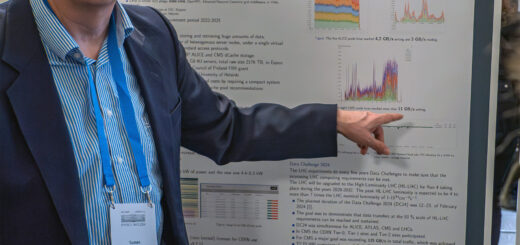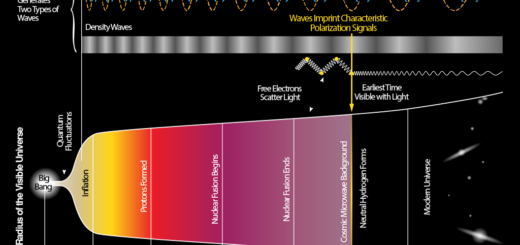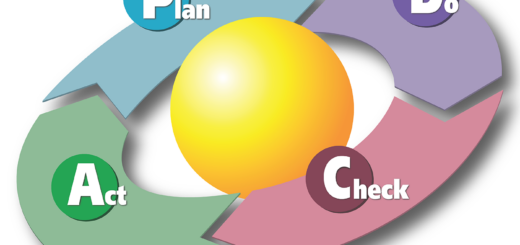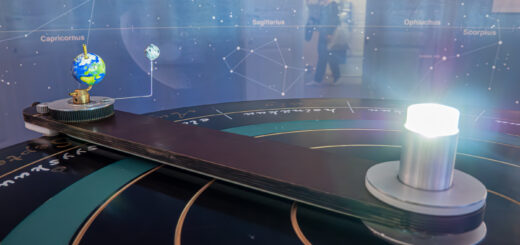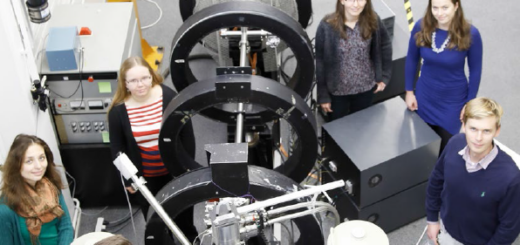Ramping up towards LHC Run 3
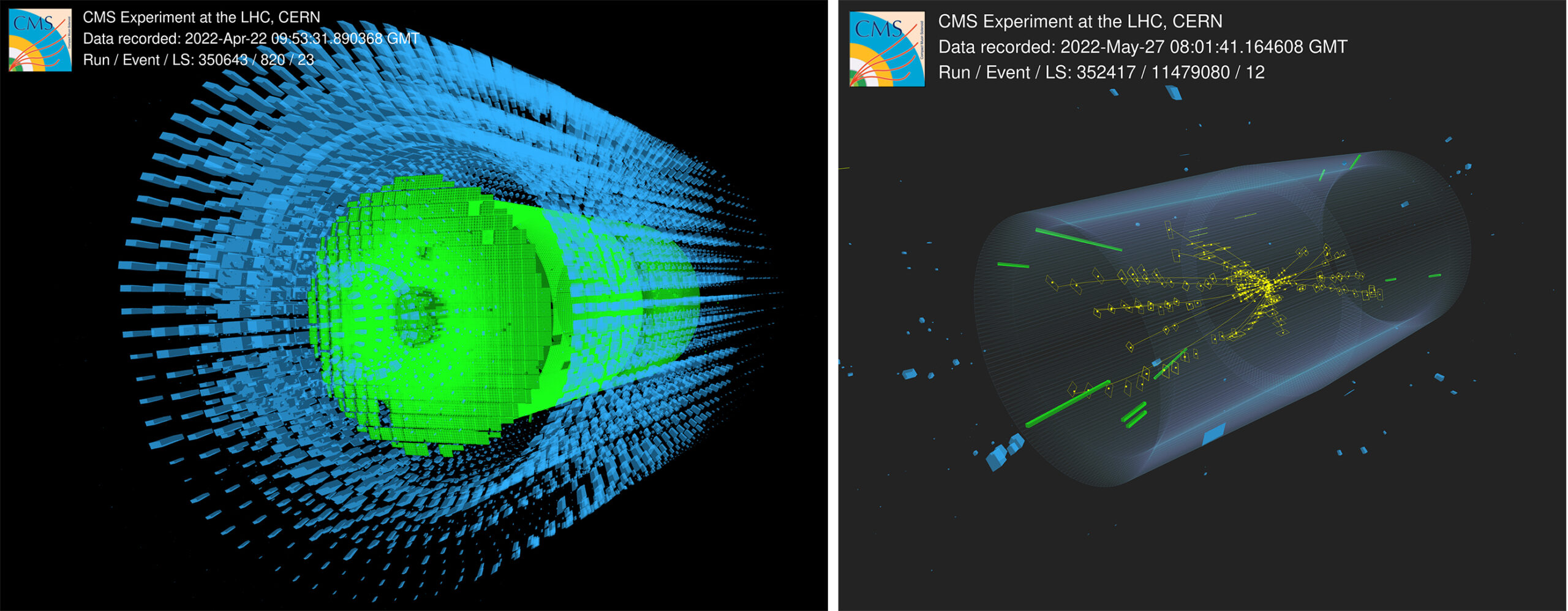
The CMS experiment is one of the four large experiments at the LHC. Since the beginning of data-taking in 2010, the CMS Collaboration has published more than 1100 scientific papers on a highly diverse range of particle physics topics. On 4 July 2012, a several decades-long wait came to an end as the ATLAS and CMS experiments announced the discovery of the Higgs boson [1]. Ten years on, the particle physics community celebrates this extraordinary achievement [2] and looks forward to a bright future for research with the restart of LHC operations.
LHC ramping up
After the successful Run 1 operations of the LHC, with a centre of mass energy of 7-8 TeV, a second data-taking period at 13 TeV energy followed in 2015-2018, Run 2. The number of events that an experiment observes is proportional to a quantity called luminosity – a measure of how many collisions are occurring in the detector [7]. CMS accumulated about 140 fb-1 of integrated luminosity during Run 2. The third data-taking period, Run 3, is commencing this summer at a record centre of mass energy of 13.6 TeV and is expected to deliver a record amount of integrated luminosity as well.
The Friday after the Easter weekend, 22 April 2022, marked the official start of Run 3. On that day CMS recorded beam splash events that happen when a single proton beam hits a one-meter-thick collimator in the vicinity of the CMS detector, resulting in a spray of particles (mostly hadrons and muons) travelling further to the detector as one huge “splash” of particles as seen in Figure 1 (left). Beam splashes are used by the experiments to test their numerous sub-detectors and to synchronise them with the LHC clock. According to the current LHC schedule [3], the regular proton physics runs at nominal luminosity (with 1200 circulating bunches) are foreseen to commence in early August.
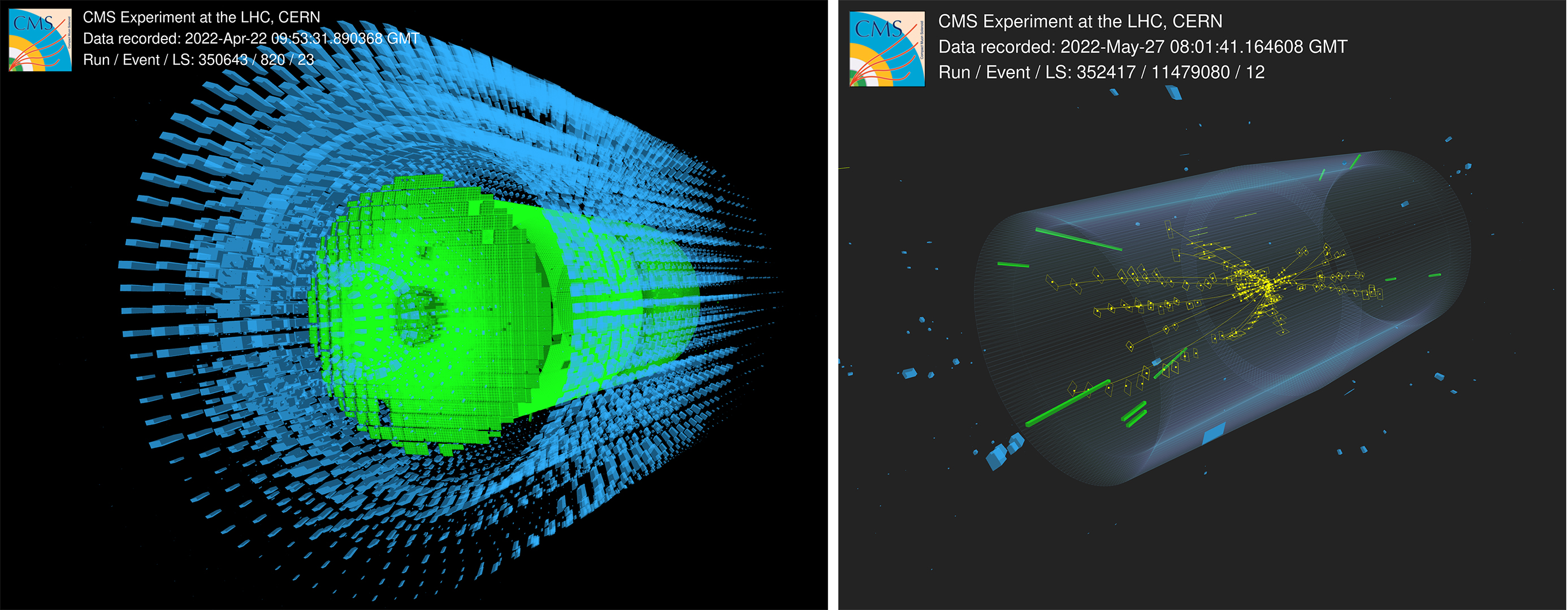
Figure 1: The left event display (22 April 2022) shows the detector lit up by a beam splash event, the first and simplest type of particle collisions created by the LHC. They are the result of a single proton beam hitting a collimator placed in the beamline in the vicinity of the CMS detector [4]. The right event display (27 May 2022) shows the signal left in the detector by one of the collisions happening during the first LHC Run 3 fill with “stable beams” declared. Only then the full detector can be operated safely during collisions. These collisions took place at injection energy (450 GeV) [5].
In recent days, some further important milestones have been reached in the commissioning phase: Figure 1 (right) shows the signal left in the detector from some of the first collisions that took place at the injection energy of 450 GeV (cf. target beam energy of 6.8 TeV). May 27th was the first time that LHC declared “stable beams” during Run 3. Only then the full detector can be operated safely during collisions. Already a few days later, on May 31st, the first collisions at nominal beam energies of 6.8 TeV took place in order to perform the first van der Meer scans of Run 3. These scans measure the transverse distribution of particles in an accelerator beam and are fundamental to a precise determination of the instantaneous luminosity of an accelerator [6,7].

Figure 2: The main page of the LHC status displays is the so-called LHC Page 1. It summarizes the most important properties at a glance and is important not only for the accelerator team but also for the scientists of the experiments.
The left status display shows the end of Run 2 proton-proton collisions in October 2018 [8], the middle display shows the first stable beams of Run 3 on 27 May 2022 [9] and the right display shows the first fill nominal beam energy of 6.8 TeV on 31 May 2022 [9].
One does not need any affiliation with CERN in order to monitor the status of LHC operations. The so-called LHC Page 1 is publicly available [9] and examples of the display at the end of Run2, during the first stable beams of Run 3, and during the first fill with nominal beam energy are shown in Figure 2. The LHC Page 1 summarizes the most important properties at a glance and is important not only for the accelerator team but also for the scientists of the experiments. For example, the shift crew physically present in the CMS control room adjusts the operation mode of the detectors according to the status of the accelerator. Only when LHC declares stable beams, reliable data for physics analysis is recorded, reconstructed, and later distributed to analysts all around the world.
CMS detector ready for Run 3
Dealing with a large number of simultaneous interactions in a single bunch crossing (pile-up) is the price one has to pay in order to reach the highest luminosity in the three years of Run 3. The maximum instantaneous pile-up in Run 3 will be similar to that of the 2018 data taking period but the average larger. The machine plans to maintain the maximum instantaneous luminosity for several hours at the beginning of each fill. Such challenging pile-up warranted the recent CMS experiment upgrade of key components to resolve the multiple interactions and efficiently analyze the data. For example, the CMS pixel tracking detector, after undergoing an important upgrade between 2016 and 2017, has been further upgraded in its innermost layer in order to handle the high rates of Run 3. The Helsinki CMS Upgrade project was responsible for the quality assurance of all pixel detector bare modules after flip-chip bonding.
Furthermore, the hadronic calorimeter (HCAL) has been improved with enhanced readout granularity along the shower depth; the first stations GE1/1 of the Phase 2 upgrade detectors for the High Luminosity phase of the LHC, the Gas Electron Multiplier (GEM) detectors, have been installed; and the High-Level Trigger (HLT) system is equipped with GPUs in order to accelerate some online reconstruction tasks.
The greater integrated luminosity will allow the CMS Collaboration to shed more light on rare phenomena. In particular, with Run 2, multiple SM predicted processes reached or nearly missed the first sensitivity: multiple first pieces of evidence and observations were reported in the past few years, and more will come with Run 3, where conventionally the evidence is claimed when the signal has a significance of 3 standard deviations and observation when the significance is 5 standard deviations. In addition to doubling the integrated luminosity, further improvements in searches for unknown phenomena are expected also from improved triggers and improved online reconstruction.
Boosting analysis efficiency
The Helsinki CMS group is known for its world-leading expertise in jet physics, as recently discussed in the HIP blog [11], and prominently awarded with an ERC Consolidator grant [12] to CMS Experiment project leader Mikko Voutilainen. The co-leadership of the CMS physics object group for jets and MET (JetMET), the largest physics object group in CMS with more than a hundred active members, will continue to be in Helsinki hands (2020-2022: Henning Kirschenmann; 2022-2023: Mikko Voutilainen). The achievements of the group are instrumental for the physics output of the whole collaboration as almost every physics analysis is either directly or indirectly relying on hadronic objects maintained by the group.

Figure 3: As one of the first CMS in-person workshops after the long Covid-related hiatus, the CMS JetMET workshop “Ramping up to LHC Run 3” took place in Florence in April 2022 with strong Helsinki involvement in organization and contributions. The workshop paved the way towards achieving ultimate physics performance with hadronic objects for Run 2 and Run 3 analyses [18].
The JetMET workshop in Florence in April 2022 (Figure 3) was a milestone in taking stock of achievements on Run 2 data and paving the way towards ultimate precision for future physics analyses.
In the last couple of years, several generations of machine learning algorithms have repeatedly boosted the performance of jet identification or “tagging” algorithms. In particular, the adoption of dynamic graph convolutional neural networks such as ParticleNet [13] has helped to increase the sensitivity of analyses enormously with respect to earlier techniques. These new techniques are also applied to regression problems of jet mass [14] and – in a Helsinki thesis project – to jet energy corrections [15], promising gains also beyond the tagging challenge.
With ever-increasing datasets, the possibilities for more precise calibrations and more sensitive physics analyses are expanding. However, the wealth of data comes with the challenge of actually processing those datasets in order to prototype, develop, and test more advanced calibration techniques in an agile way. A customized JetMET version of the very compact CMS data format nanoAOD, with just 1-2 kB/event size [16], the efficient data analysis adopting columnar analysis techniques based on the scientific python package ecosystem and commodity big data technologies [17], and the automation of workflows [15,19] are crucial inputs to keeping up with the challenge.
By actively exploring, adapting, and developing these analysis tools and techniques, the Helsinki team and the JetMET group are full steam ahead towards repeated cycles of (r)evolution in the mission to reach ultimate precision and maximise the CMS physics insight.
Henning Kirschenmann
Senior Researcher, Docent, HIP-project (CMS Experiment)
Helsinki Institute of Physics
[1]: Higgs 10 symposium https://home.cern/news/news/cern/higgs10-save-date
[2]: Higgs 10 series https://home.cern/news/series/higgs10
[3]: CERN/LHC Schedule https://edms.cern.ch/ui/file/2664630/LATEST/2022-LHC-schedule_v1.1.pdf
[4]: CERN/CMS; CMS-PHO-EVENTS-2022-021-3 https://cds.cern.ch/record/2810645?ln=en
[5]: CERN/CMS; CMS-PHO-EVENTS-2022-012-7https://cds.cern.ch/record/2807179
[6]: Van der Meer Scan Luminosity Measurement and Beam-Beam Correction https://arxiv.org/abs/2012.07752
[7]: https://cms.cern/news/how-does-cms-measure-luminosity
[8]: https://home.cern/news/news/accelerators/final-lap-lhc-track-protons-2018
[9]: https://op-webtools.web.cern.ch/vistar/vistars.php
[10]: https://ep-news.web.cern.ch/content/cms-experiment-prepares-run-3
[11] https://blog.hip.fi/jetit-hiukkasfysiikan-eturintamalla/
[12]:https://www.hip.fi/blog/2022/03/17/new-erc-funded-projects-to-be-launched-at-the-university-of-helsinki/
[13]: https://arxiv.org/abs/1902.08570
[14]: https://cds.cern.ch/record/2777006
[15]: Jet Energy Corrections with GNN Regression using Kubeflow https://www.youtube.com/watch?v=iqbsbXZDjs8
[16]: https://cds.cern.ch/record/2752849
[17]: https://arxiv.org/abs/2008.12712
[18]: https://indico.cern.ch/e/jme2022
[19]: https://ethesis.helsinki.fi/repository/handle/123456789/34786


